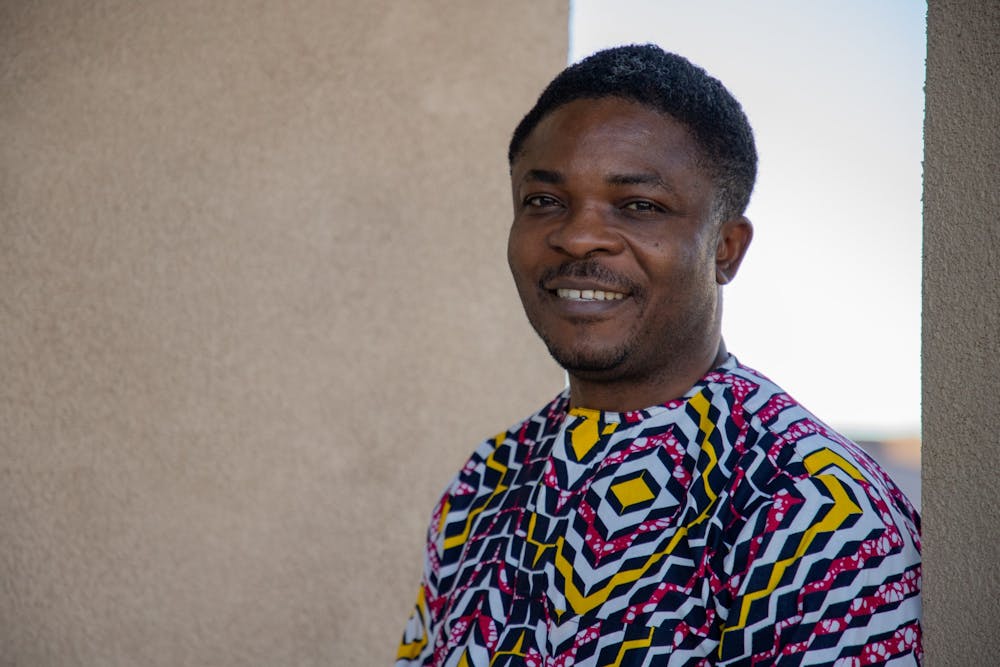In Nigeria, the Indigenous sign language of Deaf communities is disappearing. Despite making up nearly a fourth of the country’s population, the Nigerian Deaf community suffers from numerous roadblocks when considering their less than egalitarian status in society. But Emmanuel Asonye, a postdoctoral fellow at the University of New Mexico, is working on a project to help Nigerians who lack access to their native language.
Asonye, who earned his doctorate in linguistics and communications from the University of Port Harcourt, Nigeria, has been studying and cataloging Indigenous Nigerian sign language for years. As the founder of Save the Deaf and Endangered Languages Initiative, Asonye has spent his career advocating for the Nigerian Deaf community.
“Even though Deaf people may be silent in a lot of historical documentations of the societies where they belonged, they were not isolated,” Asonye said. “They are still part of the community.”
In Nigeria, deaf or hard-of-hearing people make up 23.7% of the country’s citizens, according to a research paper co-authored by Asonye. For comparison, the United States’ deaf population is 0.22% of its total population, according to Gallaudet University.
In the 1960’s, a version of sign language based on American Sign Language was introduced to Nigeria by Deaf missionary Andrew Foster. As it propagated, the novel language clashed with already established Indigenous signed languages, and traditional languages began to fade.
Deaf communities in Nigeria face stigmatization from their communities, and Asonye said this is because of a cultural ideology that views deafness as unacceptable and which is often rooted in religious beliefs.
“In my opinion, I would think (the stigma) has much to do with the family’s understanding, or family values or family ideology,” Asonye said.
The research paper that Asonye co-authored, titled “Deaf in Nigeria: A Preliminary Survey of Isolated Deaf Communities,” also cited the lack of communication between a hearing family and a deaf child.
“Unlike many other Deaf communities in the West, where family members and members of the hearing community get integrated into the Deaf community by acquiring their language and culture, these Deaf communities don’t have much of the presence of their hearing family members or their extended relatives,” the paper reads. “Hearing family members make little or no efforts to learn the signed language to communicate with their deaf children.”
Asonye said that this lack of communication can further isolate members of the Deaf community from their environment.
“The story we hear of Deaf students there, if it is a boarding school, is (that) the students don’t go back home after the school closes,” Asonye said. “The students themselves say (it’s) because nobody signs with them ... because their families don’t know how to sign.”
Now, Asonye is working on cataloging those Indigenous languages and creating an informative guide for the community to encourage communication and understanding between hearing and deaf populations, including in households with both hearing and Deaf family members.
Get content from The Daily Lobo delivered to your inbox
“What if we make sign language available to communities, to homes?” Asonye said. “The sign language that we should make available should be the one that should represent the cultural identity of the Deaf persons born in this community.”
Asonye said his team is seeking funding to develop a sign language app “that will be able to teach both Deaf and hearing (people) Indigenous sign languages” and plans to expand his work in the future to cover other areas on the African continent and beyond. He also teaches about his work on his YouTube channel.
“I look at it as a calling for me,” Asonye said. “It is a life project.”
Liam DeBonis is the photo editor at the Daily Lobo. He can be contacted at photoeditor@dailylobo.com or on Twitter @LiamDebonis






